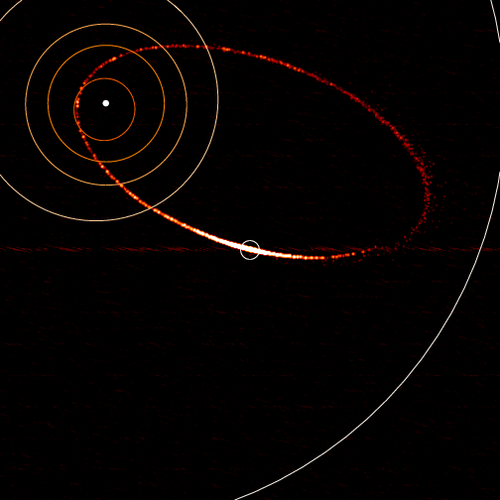"I’m a shooting star. A meteor shower. But I’m not going to die out. I guess I’m more like a comet then. I’m just going to keep on coming back.” -C. JoyBell C.
Every year, meteor showers sizzle and fizzle, yet no matter what happens in the skies, there's always one meteor shower that's reliable for a good show: the Perseids. After sunset tonight (and for about the next week) in the skies, they'll delight skywatchers across the globe.
 Image credit: created by me using Stellarium, available free at http://stellarium.org/.
Image credit: created by me using Stellarium, available free at http://stellarium.org/.
Have you ever wondered where these (or any) meteors come from? If you're like most people, you're probably going to blame the tails of comets that have come in-and-out of the Solar System. That's close, but it's not quite right!
 Image credit: Gehrz, R. D., Reach, W. T., Woodward, C. E., and Kelley, M. S., 2006, of the trail of Comet Encke.
Image credit: Gehrz, R. D., Reach, W. T., Woodward, C. E., and Kelley, M. S., 2006, of the trail of Comet Encke.
Come find out how to locate the meteors you've been waiting all year for, and their origin, here!
- Log in to post comments




Great post Ethan. Can you also let us Aussies know where to look too?
samuel@bdell ~ $ units
You have: 100milligrams (400000mph)^2
You want: pounds tnt
* 1.5284494
/ 0.65425783
So, a 100mg metor at 40,000MPH has the kinetic energy equivalent of about 1.5 Pounds of TNT (or, a few sticks of dynamite)
This is a great explanation with awesome photos. Thanks so much for the wonderful description of meteor showers - simply explained. I'll share this with our astronomy club.